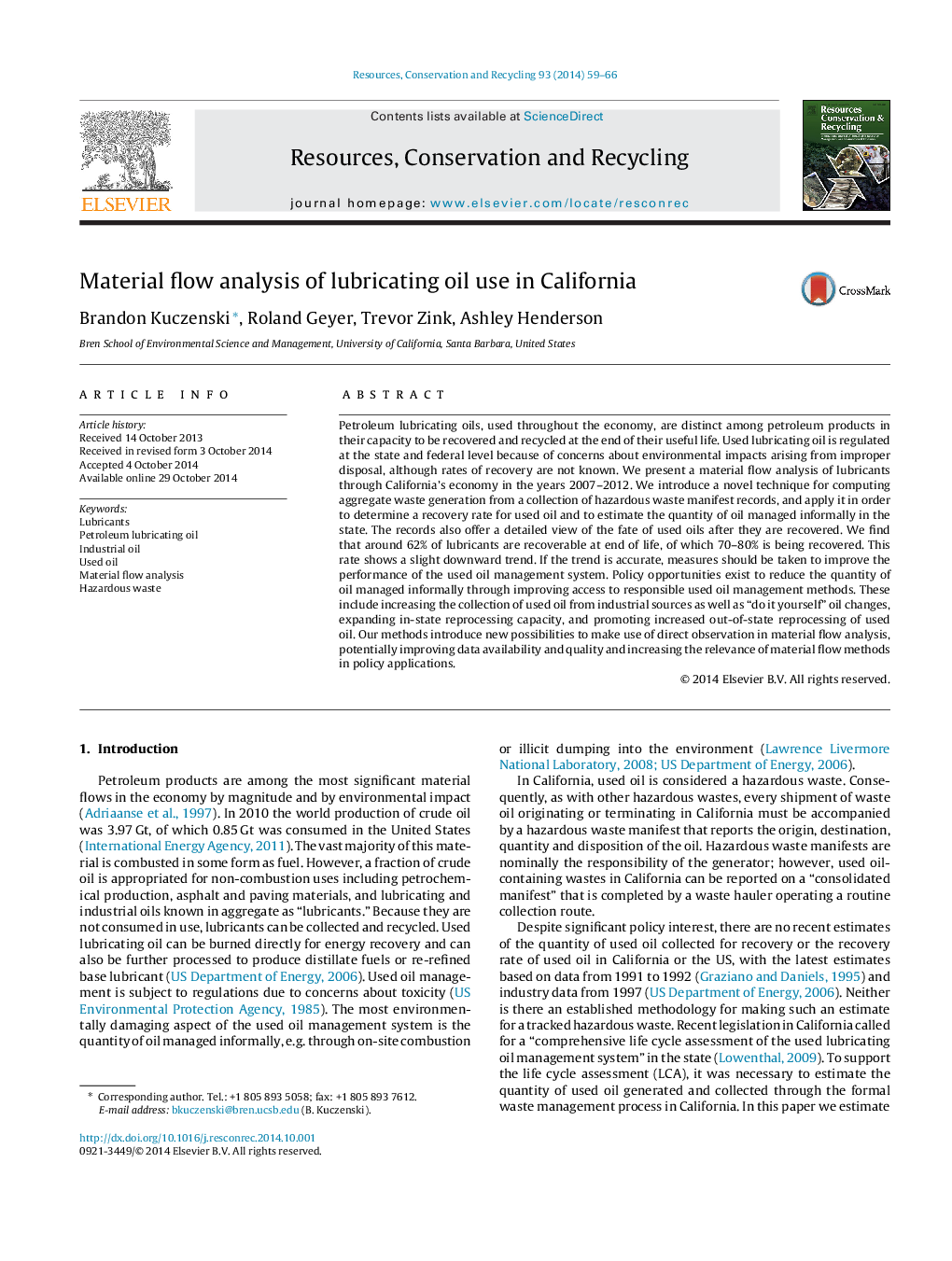| کد مقاله | کد نشریه | سال انتشار | مقاله انگلیسی | نسخه تمام متن |
|---|---|---|---|---|
| 1062886 | 1485696 | 2014 | 8 صفحه PDF | دانلود رایگان |
• Used oil collection rates over the period from 2007 to 2012 were estimated from state hazardous waste hauling records.
• A methodology is presented for computing an aggregate material flow measurement from a collection of observations.
• Over the study period, about 375–450 kt of used oil wastes were collected each year, amounting to 70–80% of recoverable used oil.
• The quantity of informally managed oil is not diminishing over time despite policy measures.
• Policy makers should target increased capacity for both in-state reprocessing and exports of used oil.
Petroleum lubricating oils, used throughout the economy, are distinct among petroleum products in their capacity to be recovered and recycled at the end of their useful life. Used lubricating oil is regulated at the state and federal level because of concerns about environmental impacts arising from improper disposal, although rates of recovery are not known. We present a material flow analysis of lubricants through California's economy in the years 2007–2012. We introduce a novel technique for computing aggregate waste generation from a collection of hazardous waste manifest records, and apply it in order to determine a recovery rate for used oil and to estimate the quantity of oil managed informally in the state. The records also offer a detailed view of the fate of used oils after they are recovered. We find that around 62% of lubricants are recoverable at end of life, of which 70–80% is being recovered. This rate shows a slight downward trend. If the trend is accurate, measures should be taken to improve the performance of the used oil management system. Policy opportunities exist to reduce the quantity of oil managed informally through improving access to responsible used oil management methods. These include increasing the collection of used oil from industrial sources as well as “do it yourself” oil changes, expanding in-state reprocessing capacity, and promoting increased out-of-state reprocessing of used oil. Our methods introduce new possibilities to make use of direct observation in material flow analysis, potentially improving data availability and quality and increasing the relevance of material flow methods in policy applications.
Journal: Resources, Conservation and Recycling - Volume 93, December 2014, Pages 59–66
